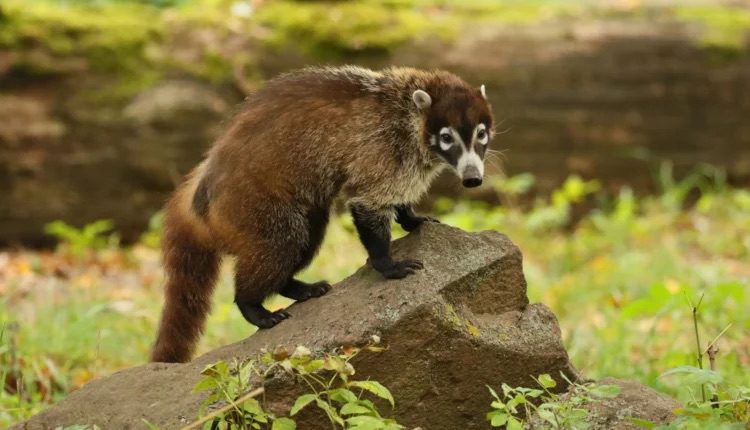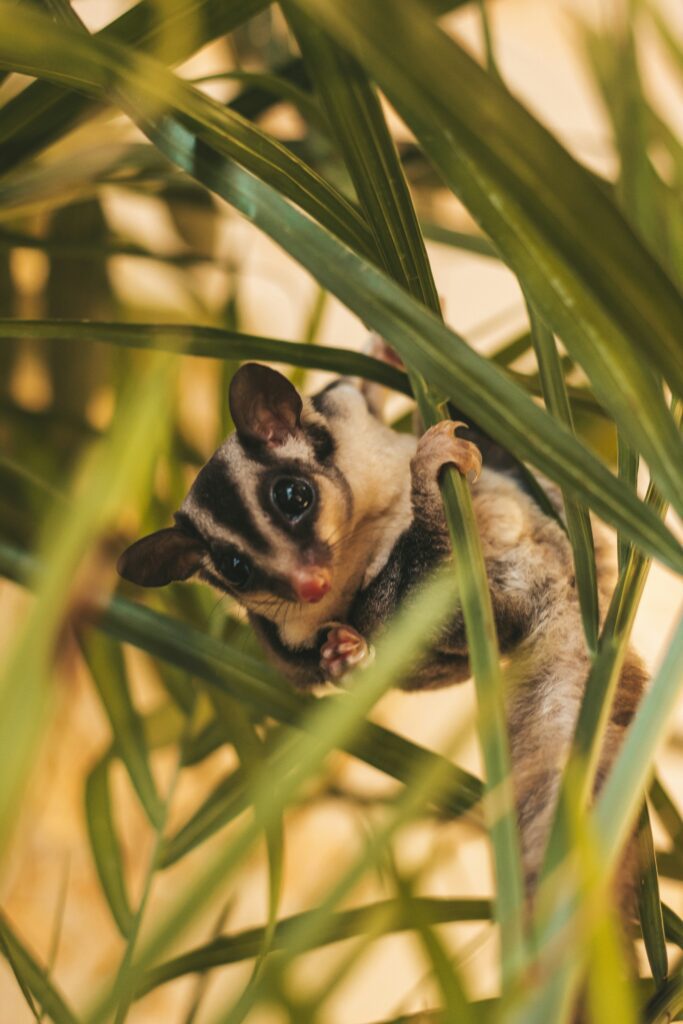
Photo courtesy of Animalia.bio.
Animals like dogs, cats, and fish are commonly found in homes. For a more unique pet, check out these exotic animals you can legally own in Texas.
Films such as “Madagascar,” “Zootopia,” and even “Monsters Inc.” might make you wonder what having an exotic pet in your home is like. Picturing a little creature keeping you company sounds like a lovely time, doesn’t it? Maybe you could even teach it a trick or two!
While you certainly know someone who owns a dog or cat, Texas law around pet ownership extends to many other animals. We’re taking a tour of the animal kingdom with unique animals that are legal to keep as pets.
Owning exotic pets in Texas
Owning any pet is a bit of a lifestyle adjustment—even something like a pet fish requires buying a tank for it to swim around in and feeding it regularly. Exotic pets are a big commitment.
Buying any of these animals requires a lot of money and preparation, from getting licenses to making a hospitable living environment for them. Once they arrive, the work doesn’t stop—they often require a lot of activity, specialized diets, and other particular care. Some of them are endangered, making it even more challenging to obtain one.
We’d highly encourage doing extensive research about owning any of these pets before considering inviting them into your home.
Here are eight animals that are surprisingly legal to own in Texas.
1. Kangaroos
As a Joey myself, I’ve always had a fondness for marsupials. Does that mean I want to own a kangaroo? Certainly not; I’m still in a bit of shell shock from feeding them in Australia, and that was over two decades ago. You also should not own a kangaroo unless you live on a farm or have an incredibly large backyard. A single kangaroo hop can surpass 15 feet long and four feet high, meaning your classic neighborhood fence probably doesn’t stand a chance. Kangaroos cannot live inside and are better off with a pal, though admittedly, seeing two kangaroos hop is even more enjoyable than seeing only one.

Photo courtesy of Caroline Jones/Flickr.
2. Lemurs
Lemurs are easily identifiable by their wide eyes, prominent snouts, and long, often striped tails. Of the animals on this list, they’re among the easiest to take care of, though they’re still not a walk in the park. They can hang out in your living room, usually won’t pace or display anxiety, and their diet is primarily fruits, vegetables, and leaves (some plants are toxic to lemurs). Though lemurs are native to Madagascar, ring-tailed lemurs can be found in Central and West Texas. They will only grow to about five pounds and no longer than a foot and a half, but they’ll provide wonderful companionship.

Photo courtesy of Mathias Appel/Flickr.
3. Sloths
Remember that scene in “Zootopia” where they go to the DMV, and it’s run entirely by sloths? That’s the kind of environment I’d hope for with a sloth in my home: good jokes, laid-back energy, and an overload of cuteness. Two-toed sloths are slightly larger than their three-toed counterparts, measuring about two to two-and-a-half feet long and weighing between eight and 17 pounds. Since they’re lacking in sharpness of vision and hearing, sloths use their sense of smell and touch to get around and forage for food, indulging in an omnivorous diet. Three-toed sloths will also use the bathroom at the same outdoor spot; moths that live in the sloth’s fur will lay eggs in the feces, which the baby moths then eat before returning to the sloth’s fur as adults. That’s kind of a gross fact, but it’s also oddly wholesome.

Photo courtesy of Sergiodelgado/CC BY-SA 3.0.
4. Sugar gliders
Sugar gliders are in abundance at certain Texas ranches. Like kangaroos, they are social animals, so you’ll need to have at least two to keep them happy. As the name suggests, these marsupials are fond of sugary foods (sap and nectar are favorites) and can glide through the air using a pair of patagia membranes. They also have the best scientific name on this list: Petaurus breviceps is Latin for “short-headed rope-dancer.” While sugar gliders are typical in Australia, the U.S. gliders might actually be Krefft’s gliders, which have migrated from Indonesia.

Photo courtesy of Timur Garifov/Unsplash.
5. Callitrichids
If this name sounds unfamiliar, you’ve probably heard of marmosets, tamarins, or lion tamarins, which make up this species of monkey. “The Simpsons” scared me off from monkey ownership—though I still regularly reference “pray for Mojo”—but perhaps you’re more enthusiastic about it. Callitrichids are most prevalent in South America, yet you can find them across Texas, including the critically endangered cotton-topped tamarin. These monkeys will grow under a foot tall and typically weigh less than a couple of pounds, feasting on insects, fruit, and tree sap.
6. Capybaras
Perhaps your first introduction to pet ownership was similar to mine, with a hamster or guinea pig. A capybara is similar to those, but good luck trying to keep it in a small cage. These rodents can grow three to four feet long and two feet high, weighing between about 60 and 174 pounds. It’s like having a guinea pig version of a Great Dane. In fact, like dogs, these animals are fans of swimming and show strong loyalty, so you may see owners proudly parading their capybara around on a leash. If you want to own one, you’ll need a lot of plants and water for their diet.

Photo courtesy of Levi Meir Clancy/Unsplash.
7. Coatis
Texas is home to several varieties of these raccoons from Central and South America, including the mountain coati, the white-nosed coati, and the South American red coati. Coatis are highly intelligent and active, so they require a lot of playtime, though they’re flexible around their owners’ schedules. They can even subsist on dry dog food and fruits, though if that’s too easy, why not mix it up with some eggs, worms, or mice? Mountain and white-nosed coatis are usually about 3.5 feet—with approximately half of that length being their tail—and between eight and 20 pounds. Red coatis are much smaller, maxing out around six pounds. Texas Exotic Animals is the only place to buy them in Texas.
8. Fennec foxes
Native foxes, such as the red fox, are illegal in Texas. However, some breeds originating in Africa are allowed with the necessary permits, including fennec foxes. These are the smallest fox species, not growing much larger than a foot long and weighing about two to four pounds. They also have distinctively large ears that can listen for prey and help cool off in the heat, which is a critical skill in Texas. Fennec foxes are omnivorous, and you might witness them burying food in the ground to come back for later. Hey, sometimes leftovers just hit the spot.

Photo courtesy of Yomex Owo/Unsplash.
This article first appeared on Good Info News Wire and is republished here under a Creative Commons license.













